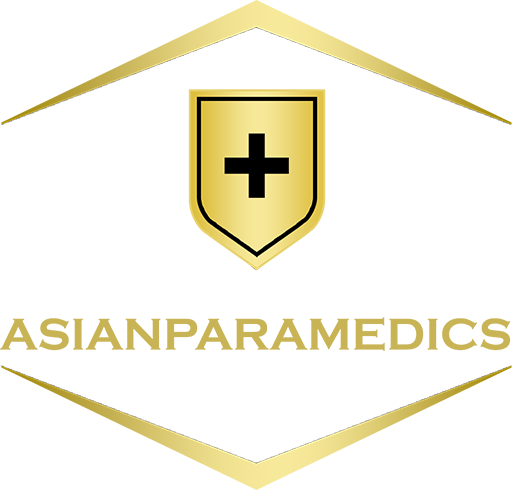- A routine GTT:
- a) is three hours long
- b) requires five blood samples ✅
- c) includes 6 urine samples
- d) uses 100 grams of glucose in a 300ml solution
- e) uses 50 grams of glucose in a 500ml solution
- Glycosylated hemoglobin:
- a) causes sickle cell anemia
- b) is affected by the patient’s food intake on the day of testing
- c) is drawn on a green top tube
- d) indicates blood glucose levels from preceding months ✅
- e) requires an SST tube
- Serum is acidified after separation for which test:
- a) uric acid
- b) Frederickson typing
- c) acid phosphate ✅
- d) BUN
- e) creatine
- WHMIS stands for:
- a) worker harmful material information sheets
- b) worker handbook on mechanical and industrial safety
- c) workplace hazardous materials information system ✅
- d) workplace harmful methods and industrial security
- e) none of the above
- MSDS sheets do not contain:
- a) product identifier and use
- b) hazardous ingredients
- c) first aid measures
- d) preventative measures
- e) hazard symbols ✅
- When using acid and water:
- a) acid is slowly added to water ✅
- b) water is slowly added to acid
- c) water and acid are added together
- d) it makes no difference how they are added
- e) they are never mixed as heat is produced
- Insidious hazards:
- a) include substances which react violently with each other
- b) include aerosols, carcinogens, mutagens, and radiation ✅
- c) are substances which injury by direct chemical action
- d) are graded using TLV and TLV-S.T.E.L. values
- e) are always chemical in nature
- Which test would not be performed on plasma or serum:
- a) lipoprotein electrophoresis
- b) iron
- c) BUN
- d) hemoglobin electrophoresis ✅
- e) electrolyte profile
- The function unit of the kidney is the:
- a) renal cell
- b) renal cortex
- c) renal tubule
- d) bladder
- e) nephron ✅
- Pus cells or fat in urine would cause this color:
- a) red
- b) yellow-brown
- c) greenish-blue
- d) milky-white ✅
- e) black
- The end products of protein digestion are:
- a) glycerol
- b) fatty acid
- c) triglycerides
- d) monosaccharides
- e) amino acids ✅
- Which statement is true regarding the use of reagent dipsticks:
- a) heat and moisture do not affect the reagent reactivity
- b) timing of each reagent area is not necessary
- c) reagent sticks are held vertically when reading
- d) all reagent sticks tests do specific gravity
- e) reagent strips should be tested daily with control ✅
- A 1/8 dilution of urine is:
- a) 1-part water and 8 parts urine
- b) 1-part urine and 8 parts water
- c) 1-part urine and 7 parts water ✅
- d) 1-part water and 7 parts urine
- e) 1-part water and 9 parts urine
- Before performing an R & M on a specimen, the urine would be:
- a) filtered
- b) brought to room temperature
- c) centrifuged
- d) well-mixed
- e) b & d ✅
- A backup test(s) to confirm a positive protein in urine would be:
- a) ictotest
- b) SSA test
- c) Clinitest
- d) TCA test
- e) b & d ✅
- Which test result would increase in a urine specimen sitting at room temperature for 3 hours:
- a) bilirubin
- b) nitrite ✅
- c) leukocyte
- d) urobilinogen
- e) ketones
- Water free of charged particles is:
- a) distilled
- b) radioactive
- c) chlorinated
- d) de-ionized ✅
- e) heavy
- Identify the incorrect step when using a serological pipette:
- a) the pipette tip is below the liquid surface when filling
- b) releasing the safety bulb will draw liquid into the pipette
- c) it delivers total capacity or multiple volumes
- d) it is held vertically and allowed to drain freely
- e) the last portion of the pipette contents is discarded in a separate container ✅
- A “TC” pipette is:
- a) allowed to drain freely
- b) marked with a double ring at the mouthpiece
- c) used for toxic corrosive liquids
- d) emptied forcibly with a safety bulb
- e) rinsed out after delivery ✅
- The destruction of erythrocytes to release hemoglobin is called:
- a) hemorrhage
- b) hemostasis
- c) erythropoiesis
- d) hemolysis ✅
- e) hypoxia
- Which factor may cause a blood smear to be too thin:
- a) the angle of the spreader is too high
- b) the edge of the spreader is cracked
- c) the smear is spread too slowly
- d) the angle of the spreader is too low ✅
- e) a dirty spreader is used
- The test measuring the oxygen-carrying capacity of RBC’s is the:
- a) CBC
- b) Hct
- c) ESR
- d) Hgb ✅
- e) MCV
- An immature neutrophil is called:
- a) blast cell
- b) LE cell
- c) band cell ✅
- d) reticulocyte
- e) packed cell
- The test that counts the number of immature RBC’s is the:
- a) osmotic fragility test
- b) differential
- c) reticulocyte count ✅
- d) RBC count
- e) stab cell count
- Which test does not monitor a patient’s coagulation mechanism:
- a) PT
- b) ACTH ✅
- c) APTT
- d) FDP
- e) platelet count
Shopping Cart


